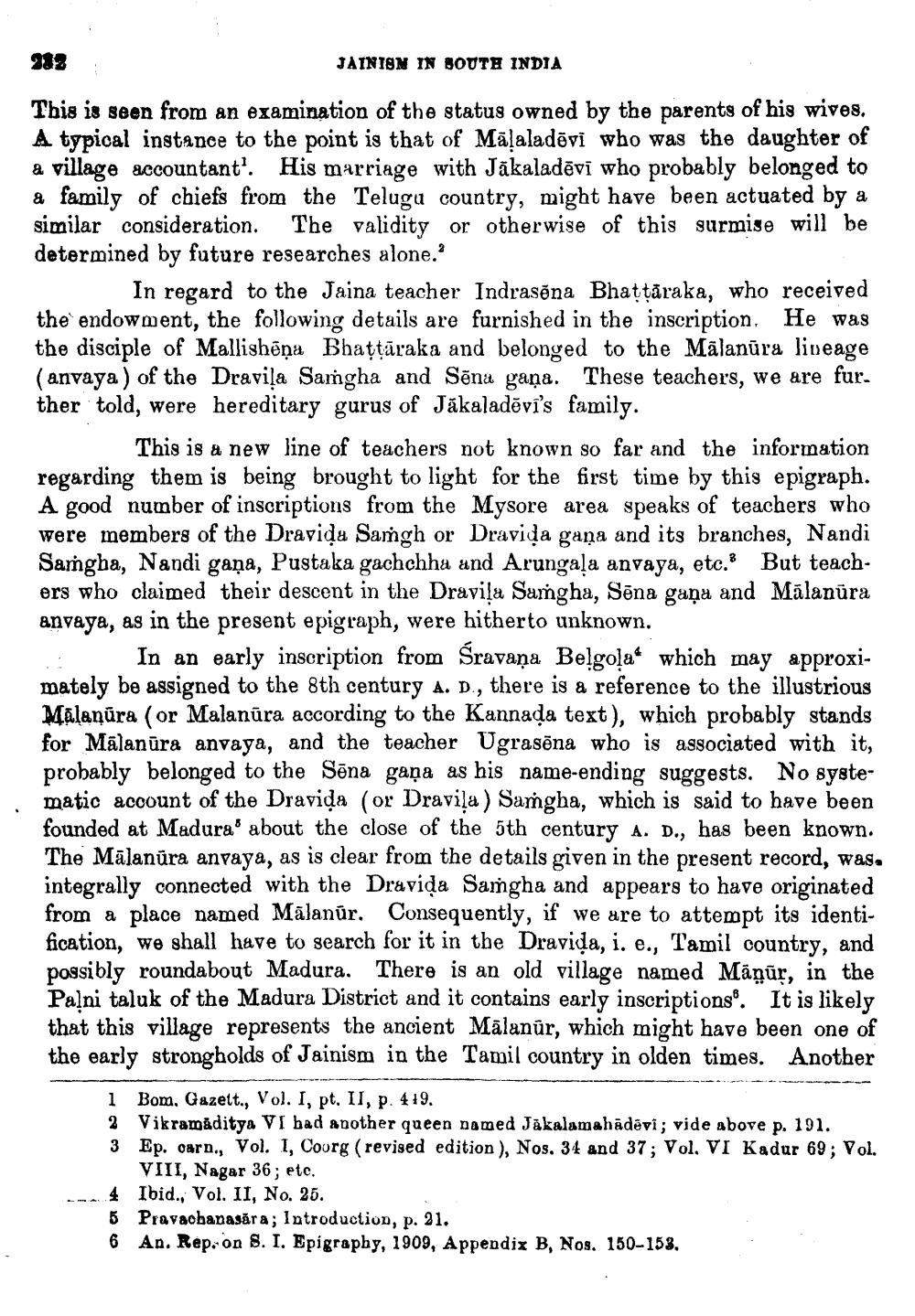________________
382
JAINISM IN SOUTH INDIA
This is seen from an examination of the status owned by the parents of his wives. A typical instance to the point is that of Māļaladövi who was the daughter of a village accountant'. His marriage with Jākaladēvī who probably belonged to a family of chiefs from the Telugu country, might have been actuated by a similar consideration. The validity or otherwise of this surmise will be determined by future researches alone.
In regard to the Jaina teacher Indrasõna Bhattāraka, who received the endowment, the following details are furnished in the inscription. He was the disciple of Mallishēņa Bhattāraka and belonged to the Mālanūra lineage (anvaya ) of the Dravila Samgha and Sēna gaņa. These teachers, we are fur. ther told, were hereditary gurus of Jákaladēvi's family.
This is a new line of teachers not known so far and the information regarding them is being brought to light for the first time by this epigraph. A good number of inscriptions from the Mysore area speaks of teachers who were members of the Dravida Samgh or Draviđa gaña and its branches, Nandi Sangha, Nandi gana, Pustaka gachchha and Arungala anvaya, etc. But teachers who claimed their descent in the Dravila Saṁgha, Sēna gana and Mälanūra Anvaya, as in the present epigraph, were hitherto unknown.
In an early inscription from Śravaņa Belgo!a" which may approximately be assigned to the 8th century A. D., there is a reference to the illustrious Malanūra (or Malanūra according to the Kannada text), which probably stands for Mālanūra anvaya, and the teacher Ugrasõna who is associated with it, probably belonged to the Sēna gaña as his name-ending suggests. No systematic account of the Dravida (or Draviļa ) Samgha, which is said to have been founded at Madura' about the close of the 5th century A. D., has been known. The Mālanūra anvaya, as is clear from the details given in the present record, was, integrally connected with the Dravida Samgha and appears to have originated from a place named Mālanúr. Consequently, if we are to attempt its identification, we shall have to search for it in the Dravida, i. e., Tamil country, and possibly roundabout Madura. There is an old village named Māņūr, in the Palni taluk of the Madura District and it contains early inscriptions. It is likely that this village represents the ancient Mālanūr, which might have been one of the early strongholds of Jainism in the Tamil country in olden times. Another
1 Bom. Gazett., Vol. I, pt. II, p. 419. 2 Vikramaditya VI had another queen named Jākalamahādēvi; vide above p. 191. 3 Ep. carn., Vol. 1, Courg (revised edition), Nos. 34 and 37; Vol. VI Kadur 69; Vol.
VIII, Nagar 36; etc. 4 Ibid., Vol. II, No. 25. 5 Pravachanasăra; Introduction, p. 21. 6 An. Rep. on 8. I. Epigraphy, 1909, Appendix B, Nos. 150-153.




